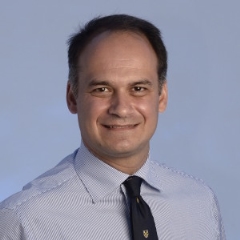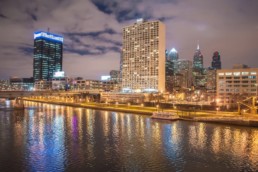 Letter from the President, Prof Werner Siebert
Letter from the President, Prof Werner Siebert
Dear Members,
Now it is just a matter of days until our EHS 12th Congress in Munich takes place. Therefore, I will not write much here, except to say that if you are not registered yet, you can still do it online. There is still time.
A highlight for me personally will be the invited combined symposium on the Wednesday 6th September where EHS joins the AAKKS (American Association of Hip and Knee Surgeons) to offer you a variety of case based discussions from Primary and Primary DDH to Revision and Infection. Also, THA & Sport: Part I is Effects of high/mild/low impact sports in artificial joints, while Part II is a Debate: My Preferred Option, covering The MODEL for the young OA active patient and The BEARING for the young OA active patient, ending with Part III, Discussion & Open Questionnaire. Topics that we are all interested in, from some of the top names in the world.
On the Thursday, I am looking forward to the AFACOT / SOTEST Symposium – The French perspective. Topics include: Is metalback useful for a polyethylene insert? and Necrosis and interest of dual mobility, to name just two.
I am really excited about the congress as a whole and there is such a wide and wealthy program that I am confident – whatever your particular interest in the hip may be -you will come home extremely satisfied after attending this event.
I greatly look forward to this wonderful opportunity to meet our members in person. It is a time for hip experts from all over the world to come together in Munich to share their knowledge, learn knew aspects of our ever-changing and advancing speciality, to catch up with all our colleagues and, of course, to make this the best ever EHS congress to date. See you there!
Your EHS President, Werner Siebert
Letter from the Secretary General, A Prof Eleftherios Tsiridis
Dear Members,
I hope you have all found some time during the month of August to relax a little bit from our very demanding profession, ready to visit the EHS Congress in Munich refreshed for Autumn and eager to dive back into the science of the hip.
All our members are cordially invited to the EHS General Assembly on Thursday 8th September 2016, from 1.30-2.30pm in Saal 13a, in the congress centre. Also, please come and visit Samantha Stokes or myself at Booth 7, anytime during the congress.
Below you will read an update on hip surgery today in Philadelphia from our American member, Javad Parvizi, who is participating in our congress next week. Also, you can read a report from our Italian member, Gianluca Cusmá, who visited hip surgery centres in China. Thanks to both for these words.
EHS Secretary General, A Prof Eleftherios Tsiridis
It is clear that the US healthcare is undergoing gargantuan changes. The time will tell if these changes stand to benefit our patients or limit access to those in real need
INTERNATIONAL EHS Member from USA, Javad Parvizi
INTERNATIONAL EHS MEMBER, Javad Parvisi
Sidney Kimmel School of Medicine
Philadelphia, USA
Total joint arthroplasty (TJA) continues to evolve. The major developments in the US in this arena happen to relate to economics of performing TJA. The “bundling” reimbursement method implemented by the US government has sent many centers searching for ways to minimize the economic impact of TJA. The latter has brought two major changes. One, and an appropriate one, has been efforts to identify patients who would be at higher risk of complications in the 90-day postoperative period, and hence resulting in a higher cost to the Accountable Care Organizations (ACOs). The ACOs have also implemented strategies to deal with postoperative issues to limit readmission and reoperation on patients undergoing TJA. Efforts to reduce cost of TJA has resulted in many centers to reduce the hospital stay for patients by even offering outpatient TJA. A few studies presented at the recent meeting of the AAOS demonstrated that outpatient TJA may be a viable option, at least in high volume arthroplasty centers, on a select group of patients.
The second change, and perhaps not so appropriate one, is the theoretical tendency to avoid offering surgery to patients who may be at higher risk of complications. This “cherry picking” is in total contrast to the intentions of the Obamacare, that was introduced to broaden the access to healthcare for all. The time will tell on what the ACOs will do with the group of patients at higher risk of complications. One necessary and critical step at the moment is the dire need to develop proper and valid risk stratification methods that will allow tiered reimbursement based on the risk status of the patients.
It is clear that the US healthcare is undergoing gargantuan changes. The time will tell if these changes stand to benefit our patients or limit access to those in real need.
I didn't meet any western people for 3 weeks - working, eating, travelling and sharing experiences only with Chinese colleagues and patients - and this was the difficult but also amazing aspect of my travel
EHS Member from Italy, Gianluca Cusmà
EHS MEMBER, Gianluca Cusmà, VISITS CHINA
MIlan, Italy







